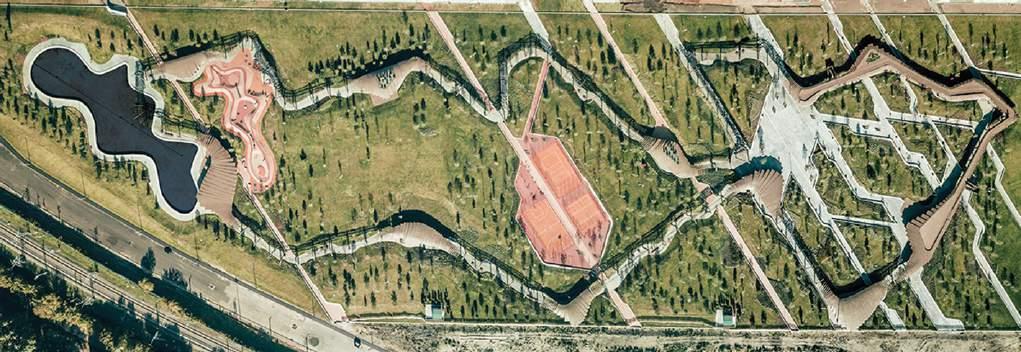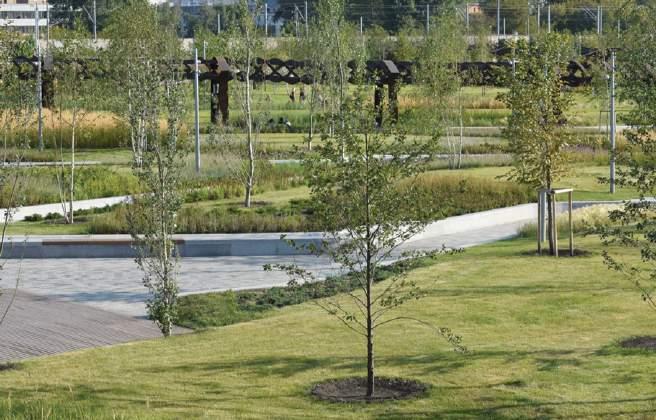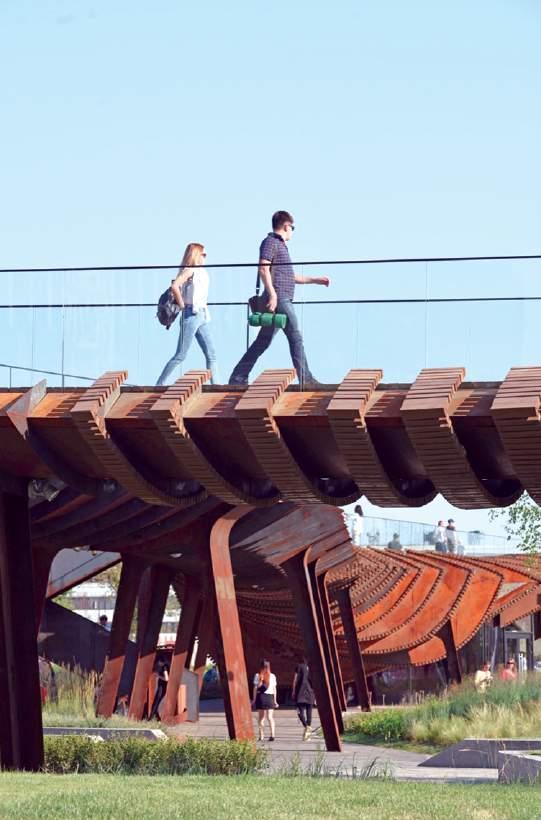
3 minute read
Tyufeleva Roshcha Park @ Moscow, Russia
(Source: worldlandscapearchitect.com)
TYUFELEVA ROSHCHA PARK @ MOSCOW, RUSSIA Opened in the summer of 2018, Tyufeleva Roshcha Park is a vibrant 10-hectare public park in the heart of “ZilArt,” a 90-hectare mixed-use neighbourhood. One of the largest private development endeavours in Europe at the moment, Tyufeleva Roshcha Park is designed to re-stitch an urban fabric that was interrupted by the Zil automotive factory for decades
Advertisement

(Source: landezine-award.com)


(Source: landezine-award.com)

The role of Tyufeleva Roshcha Park is to establish a vibrant open space amenity and “green lung” for the new development. The park site was once a semipolluted site, for which the remediation process took several decades. Just before the park construction began, the top layer of the site was replaced with high quality topsoil.
Already nicknamed “the park of the 21 st century”, the project is garnering much international attention. The park has its own Metro transportation hub that is integrated with Moscow’s public transport network, and soon Tyufeleva Roshcha Park will be flanked by many new cultural institutions such as theatres and the new Moscow Hermitage Museum. The inherent complexities of the urban condition, along with the aggressive project schedule has given !melk much praise from the client for their ability to incorporate public opinion and to deliver critical project components in unique and thoughtful ways.
In its composition, Tyufeleva Roshcha Park is organized by a framework that deliberately connects to the adjacent urban fabric of the ZilArt Development. Integral to this framework is a parametric, mathematical gradient — which is immediately noticeable when looking at a plan map of the park. The purpose of the gradient is twofold: its directionality reinforces connections to the surrounding urban fabric, while a shifting balance of pavement-to-planted-area creates spaces that dramatically across the park. Superimposed, and offering a completely separate layer of park experience, is a spectacular new archetype of park architecture, the “Assembly Line,” a 1.6-km long element that consolidates most of what is traditionally included as typical park programme such as kiosks, pavilions, pergolas, walkways, play equipment, furnishings, lighting, speakers, etc. Most remarkable is that visitors can alternate between the “Assembly Line” and the “base park,” each of which offers distinct, multi-dimensional experiences.
The “Assembly Line” echos the vibrant industrial history of the Zil Automotive brand, which for decades stood as the

(Source: worldlandscapearchitect.com)

(Source: landezine-award.com)
heroic symbol of the Soviet era. Depending on how one interacts with “Assembly Line,” whether by using it as a journey at ground level, climbing up to its overlooks and elevated walkways, it is a carefully free-formed counterpoint to the mathematical composition of the overall park ground-plane.
Tyufeleva Roshcha Park is conceived as a fully democratic park, making it appropriate for all people, of all ages and abilities. Aside from the “Assembly Line” the park features a highly-popular pond, playgrounds, sports fields, and a planting strategy that highlights seasonal interest. The park elements and experiences have been tailored to be appealing for year-round use, and to accommodate a multitude of activities that may occur, and this includes park use throughout the day and night.
(Source: landezine-award.com & worldlandscapearchitect.com)











